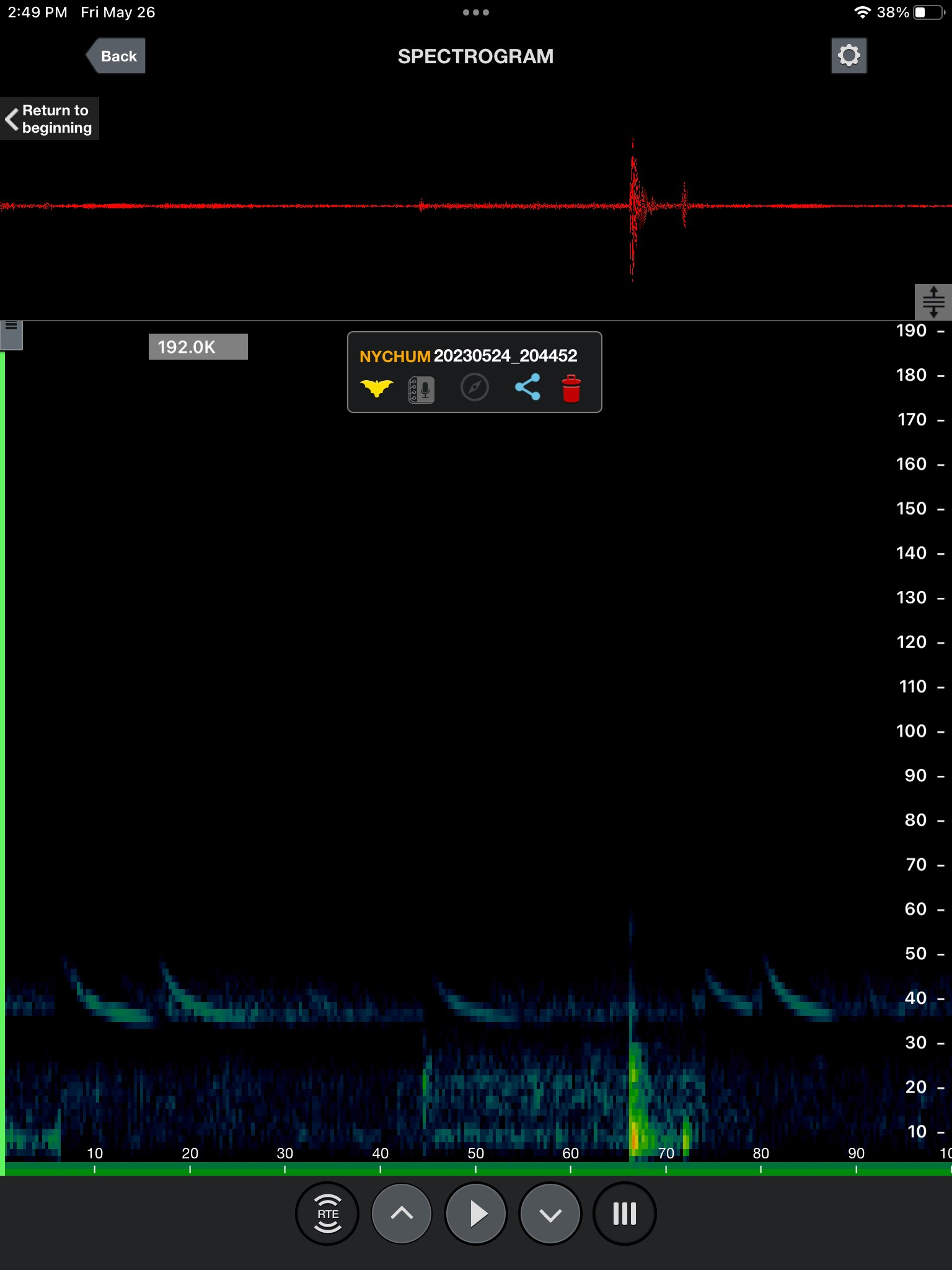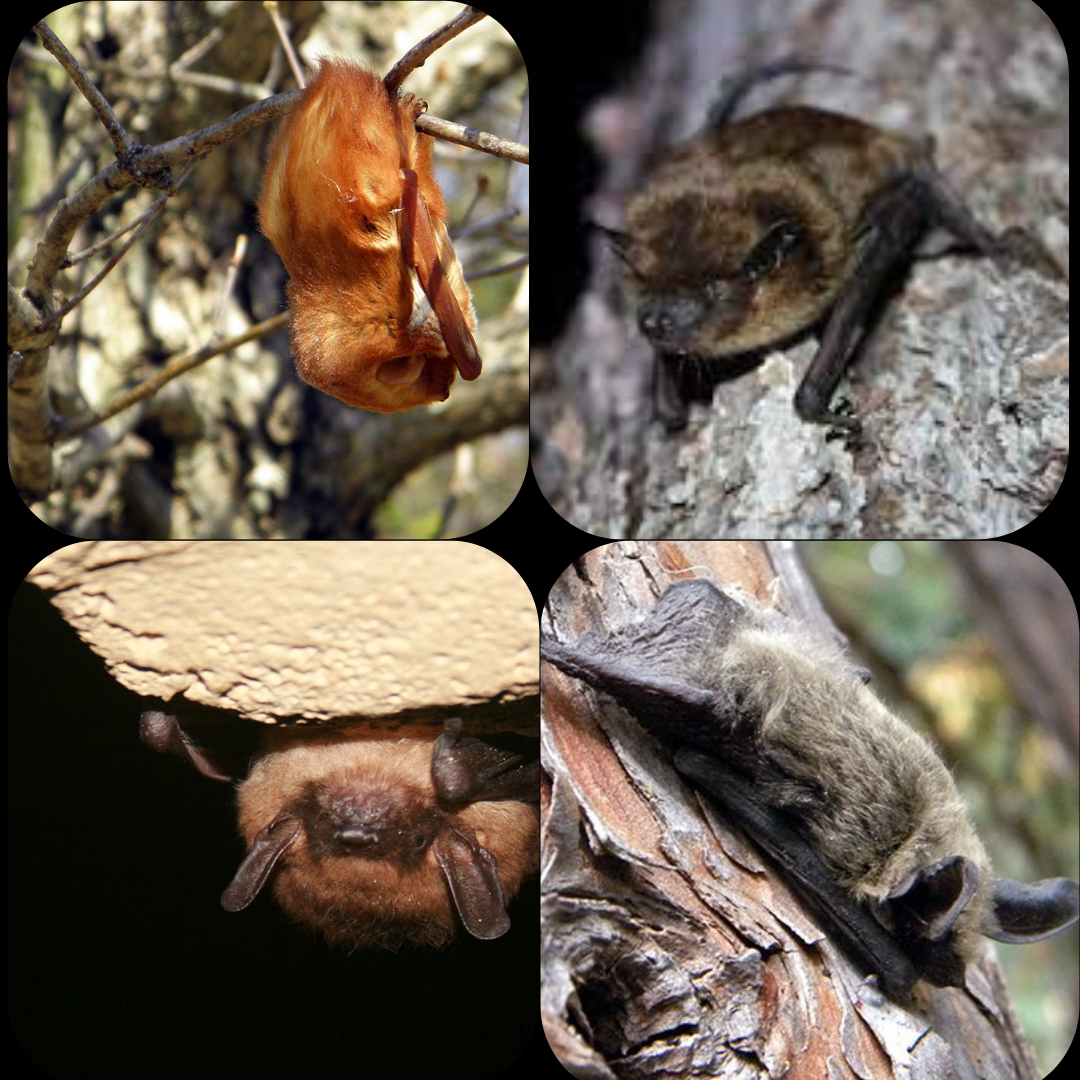Campus Bat Walks

sustainNU is taking our mission of campus sustainability to new heights, or perhaps more accurately, new heights in the night sky. To better understand our campus ecosystem Liza Lehrer, Lincoln Park Zoo’s resident bat expert, led a tour to teach about our local bat species, the threats facing bat populations across the country, and methods for monitoring. During these “Bat Walks”, our team used state-of-the-art acoustics monitors to record the echolocation calls emitted by bats in their natural environment. Each bat species emits a unique call, allowing researchers to use spectrograms (visualizations of how a sound varies over time) to identify the species calling.
Through these acoustic monitoring efforts, we have successfully identified four distinct species of bats gracing our campus after dark: the silver-haired bat, eastern red bat, big brown bat, and evening bat. Most of these species migrate to their wintering grounds during the colder months, whether that be warmer areas in the southern US or local caves. As such, Bat Walks are restricted to the fall and spring quarters.

But the real adventure is just beginning. We're not just here to observe these remarkable creatures; we're here to make a difference. Our data will contribute to Lincoln Park Zoo's community effort to monitor bats in the Chicagoland area, which is dedicated to better understanding how bats respond to urbanization. Bat conservation efforts are more important than ever as bat populations across North America face a significant decline, primarily due to the devastating impact of white-nose syndrome.
By studying the interactions of these species with the evolving urban landscape, we aim to better understand how to support them and ensure their survival. Our commitment to environmental sustainability extends beyond conserving energy and reducing waste; it also means protecting the delicate ecosystems that coexist with us, even in urban environments like ours. Keep an eye on sustainNU’s newsletters and social media posts for updates and upcoming activities related to this project.